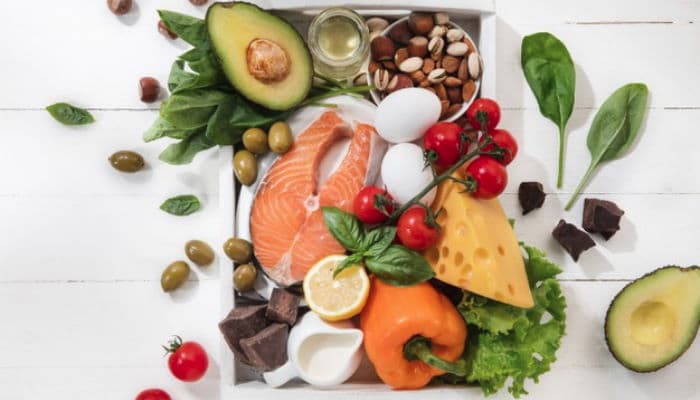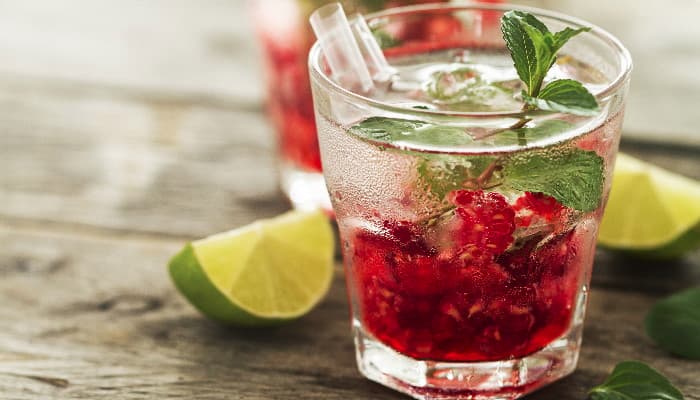
Salute vettore creata da freepik - it.freepik.com
"Inflammation is a non-specific inborn defence mechanism which constitutes a protective response whose ultimate goal is the elimination of the initial cause of damage and the initiation of the repair process."
As you can guess from the definition, inflammation is a positive event that puts in place a whole series of mechanisms that cause the body to recover and "heal itself."
The speech is quite different when the inflammation becomes chronic (The silent killer of our health)
Causes and consequences of chronic inflammation
The causes of chronic inflammation can be many: an accumulation of fat within a short period, may be a disease such as autoimmune (Chron, hypothyroidism, etc.), excess or defect of physical activity, stress Chronic (stress at work, hectic pace of life, poor amount and/or sleep quality), an inadequate diet.
The consequences of chronic inflammation are many and varied (depends very much on the susceptibility of an individual): migraine, fatigue and fatigue (both physical and mental), gastric or (more frequent) intestinal disbioses, Increased sensitivity to pain, drowsiness, water retention (edema, cellulite), generic sense of discomfort that in the most severe cases can compromise the quality of life.
Nutrition and inflammation
The power supply may affect these conditions for several reasons:
- Hormones such as insulin and cortisol are involved in inflammation and, in turn, are influenced by the way we nourish (must be well balanced among them: unsuitable and prolonged hyperprotein diets can Unbalancing and raising cortisol levels also altering the circadian rhythms as well as iperglucidiche and high GI diets can unbalance insulin levels).
- Reactive oxygen species (free radicals or ROS) that are formed as a result of incorrect life habits (cigarette smoke, use of alcohol, alteration of the sleep cycle), in the presence of stress or during exercise.
The way we feed it allows us to combat the accumulation of these molecules through external help from anti-inflammatory drugs (such as flavonoids or vitamin C), as well as strengthen our own antioxidant defenses.
If you want to deepen the topic continue to follow us, because we are working on an article about the role that ROS play in physical activity and the importance that physical activity has in improving the antioxidant capabilities of our organism!
- There are molecules that are in the inflammation mechanisms. There are preformed mediators (such as serotonin and histamine), released at the time of need and then there are mediators that are formed only when necessary: the latter are the Eicosanoids (which include leukotrienes and prostaglandins) and Cytokines, platelet activating factors, nitric oxide, reactive oxygen species.. All molecules induced on feeding stimulation.
Prostaglandins and leukotrienes come from both essential fatty acids, both omega 6 (arachidonic acid) and Omega 3 (EPA and DHA) and regulate the relationship between insulin and glucagon.
Symptoms of chronic inflammation
In addition to all the symptoms listed above, we can do blood tests to control some basic parameters:
- The level of fasting insulin and blood glucose: mean-high values are an alarm bell for insulin resistance and pre-diabetes but can also be an inflammatory status index).
- The arachidonic acid/EPA ratio (AA/EPA ratio), (the ideal value of AA/EPA is 1.5) that goes to measure the amount of arachidonic acid (AA) and eicosapentaenoic acid (EPA) found in cell membranes, and the relationship between them. The AA is the progenitor of omega6 fats, while the EPA is the progenitor and the active form of the OMEGA3. When this ratio is unbalanced it is reflected on the composition of the cell membrane and on the level of inflammation.

Cibo foto creata da master1305 - it.freepik.com
Possible Remedies ( Anti-Inflammatory Diet)
We see what anti-inflammatory nutrition consists of to treat a state of inflammation in the shortest possible time:
Ensure a balanced relationship between Omega6 and Omega3 (the "perfect" ratio is 4:1 in favor of the Omega 6). Most people, nowadays, assume an excess of omega 6 (the ratio reaches up to 12:1) especially for the presence of certain ingredients present in packaged and industrial products. If an inflammation is in place it can momentarily unbalance this ratio in favor of the Omega three with quality supplements: they must have certification such as that IFOS (which certifying the absence of heavy metals), must Contain at least 70% of total omega3 with a prevalence of EPA on DHA.
Take "good" Omega6: the Omega 6 are of different types; there are potentially harmful ones contained in industrial fats (margarines, refined vegetable oils, sunflower oil, corn oil, soybean oil...) and in the fatty parts of animals or Fish bred intensively. The "good" ones are found in the dried fruit (walnuts, hazelnuts, almonds, cashews, pine nuts...), in the seeds not skinned (sunflower, pumpkin,) in whole grains in grain (not in flour and wholemeal pasta but the real cereals) and in the fat of animals bred Outdoors.
Integrate Omega3: They are contained in algae, wild fish, marine mammals and some seeds (such as flax seeds); the vegetal sources of Omega3 do not have a high biological value, while animal sources have the problem of Termolabilità (deteriorate with cooking). In the absence of pathologies it is not necessary to worry too much about the bioavailability of omega3 or the fact that they can deteriorate, it is sufficient the suggestion to consume fish 2 or 3 times a week, perhaps introducing from time to time carpaccio of fish that has been previously demolished to avoid the risk of contamination or to introduce plant sources on a daily basis. Algae can be a decent source of omega3 but you have to prefer those Breton or Scottish.
Ensure stability glycemic and Insulinemica: balanced meals, a small amount of fibers at every meal, prefer rice and grains in grain compared to pasta and starchy. Strongly restrict the consumption of milk and derivatives (although they do not have a strong impact on blood glucose, they still tend to raise insulin levels to be split and metabolized).
Can be useful the use of integral Marine salt : When there is an unbalanced production of cortisol, in parallel there is a lower production of aldosterone, the hormone that regulates the sodium-potassium balance and this can cause a deficiency of Sodium that is recognized with lowering blood pressure, intolerance to heat, fatigue, exhaustion, Headache.
Exclude (as long as the inflammation is in place) all sources of vegetable fats that are not extra virgin olive oil or extra virgin coconut oil (hence margarines, rice oil, corn, sunflower, wheat or mixed seeds or packaged products that Contain)
Beware of the fish: Do not use fish of breeding and, in particular, exclude the pangasius (it is one of the cheapest fish on the market but also of the most contaminated!)
The richest fish in Omega 3 is the blue one but it is preferable to choose "small" fish rather than abusing tuna, salmon, swordfish: the latter are large fish, which live longer and accumulate a greater amount of toxic substances present In the waters (in particular mercury, whose concentrations have tripled over the last twenty years)
If you are sensitive to histamine (allergic subjects for example), you must limit as much as possible the consumption of foods that cause the release, such as: fermented foods, spinach, mushrooms, strawberries, aged cheeses, Sliced (especially if they are not quality), canned tuna, cocoa, wine, dried fruit, papaya
In case of discombobulated intestines, depepsie, chronic inflammation, abdominal swelling and dermatitis should be limited (or completely eliminated until the regression of symptoms) all foods that induce the production of pro substances Inflammatory such as Solanaceae (eggplant, potatoes, peppers, chili)
Must be assured, finally, the correct intake of molecules that act as cofactors for the endogenous production of antioxidant for example:
- Ferro: We find it abundantly in fish such as anchovies and sardines, in meat (preferably those of animals bred to pasture, so-called grassfed Meats), in raw chocolate (raw) and in legumes. In plant sources there is less bioavailability and therefore, to optimize its absorption, it is good to associate a source of vitamin C (a lentil salad with parsley and lemon juice for example)
- Vitamin B12: all protein sources
- Vitamin C: In Citrus, kiwi, strawberries, peppers, egg yolk, sweet potatoes
- Vitamin D: Animal and fish fat (animals bred at pasture, fish caught), egg yolk
- Folic acid: Dark leafy vegetables especially
- Zinc: Food yeast in flakes, seafood, pumpkin seeds, wheat germ
- flavonoids/polyphenols/Epicallocatechingallato/Resveratrol: Berries, chocolate (the real one: raw or fondant > 80%), green tea (not the one in sachets that we find at the supermarket, those sachets of antioxidants preserve little and Nothing, prefer tea in leaves)
- Do not underestimate the use of spices and aromas: they are consumed in the kitchen in small quantities but still contribute in the long term to the amount of antioxidants introduced with the diet)
- Fruits and vegetables must always be in season: not only does it cost less (both regarding our wallets than the environment) but, there is a greater content of nutrients

Sfondo foto creata da valeria_aksakova - it.freepik.com
The importance of water
Finally let us not forget the WATER, something so simple and trivial as neglected. "The water extinguishes the fire," you know. The hydration of the organism is indispensable for the "washing" of the toxins that cause inflammation but forget the classic liter 1 liter and a half of water per day. We cannot know with certainty the exact amount of water we need, we can take reference values and evaluate how our organism responds
0.05 L/kg body weight in sportsmen
0.04 L/kg body weight for sedentary
Of course drinking more is not equivalent to moisturizing, there is a need for the right supply of water and minerals (potassium, sodium, chlorine...) and this contribution can vary according to many factors: Is it summer? Winter? Is it Hot? Did we lose much sweat? Have I eaten many or few fibers and vegetables? And so on...
For the state of health, well-being and sports performance not conducive to drinking too much, nor too little (keep following us, soon we will do a deepening on this issue).
In conclusion, an advice that I feel to give you is to keep as much as possible "Basica" your diet.
Get help from a professional regarding the balancing of macronutrients: In case of inflammation for some it is useful to reduce the intake of proteins, for others the carbohydrate intake.
The password is customization, no diets or pre-printed workouts.
Bibliography
- Orchard TS, Gaudier-Diaz MM, Weinhold KR, Courtney DeVries A – Clearing the fog: a review of the effects of dietary omega-3 fatty acids and added sugars on chemotherapy-induced cognitive deficits (Breast Cancer Res Treat. 2017)
- Ruiz-Canela M, Bes-Rastrollo M, Martínez-González MA – The Role of Dietary Inflammatory Index in Cardiovascular Disease, Metabolic Syndrome and Mortality (Int J Mol Sci. 2016 Aug)
- Bi X, Lim J, Henry CJ – Spices in the management of diabetes mellitus (Food Chem. 2017 Feb)
- Mendiola-Precoma J, Berumen LC, Padilla K, Garcia-Alcocer G – Therapies for Prevention and Treatment of Alzheimer’s Disease (Biomed Res Int. 2016)
- Sauer S, Plauth A – Health-beneficial nutraceuticals. Myth or reality? (Appl Microbiol Biotechnol 2017 Feb)
- K.He - Fish, long-chain omega-3 polyunsaturated fatty acids and prevention of cardiovascular disease – Eat fish or take fish oil supplement? (Prog Cardiovasc Dis- 2009 Sep-Oct)
- Amiot MJ, Riva C, Vinet A – Effects of dietary polyphenols on metabolic syndrome features in humans: a systematic review (Obes Rev. 2016 Jul)
Curated by
Dott.ssa Patalano Myriam Biologist Nutritionist
Ischia Nutrizione Patalano
